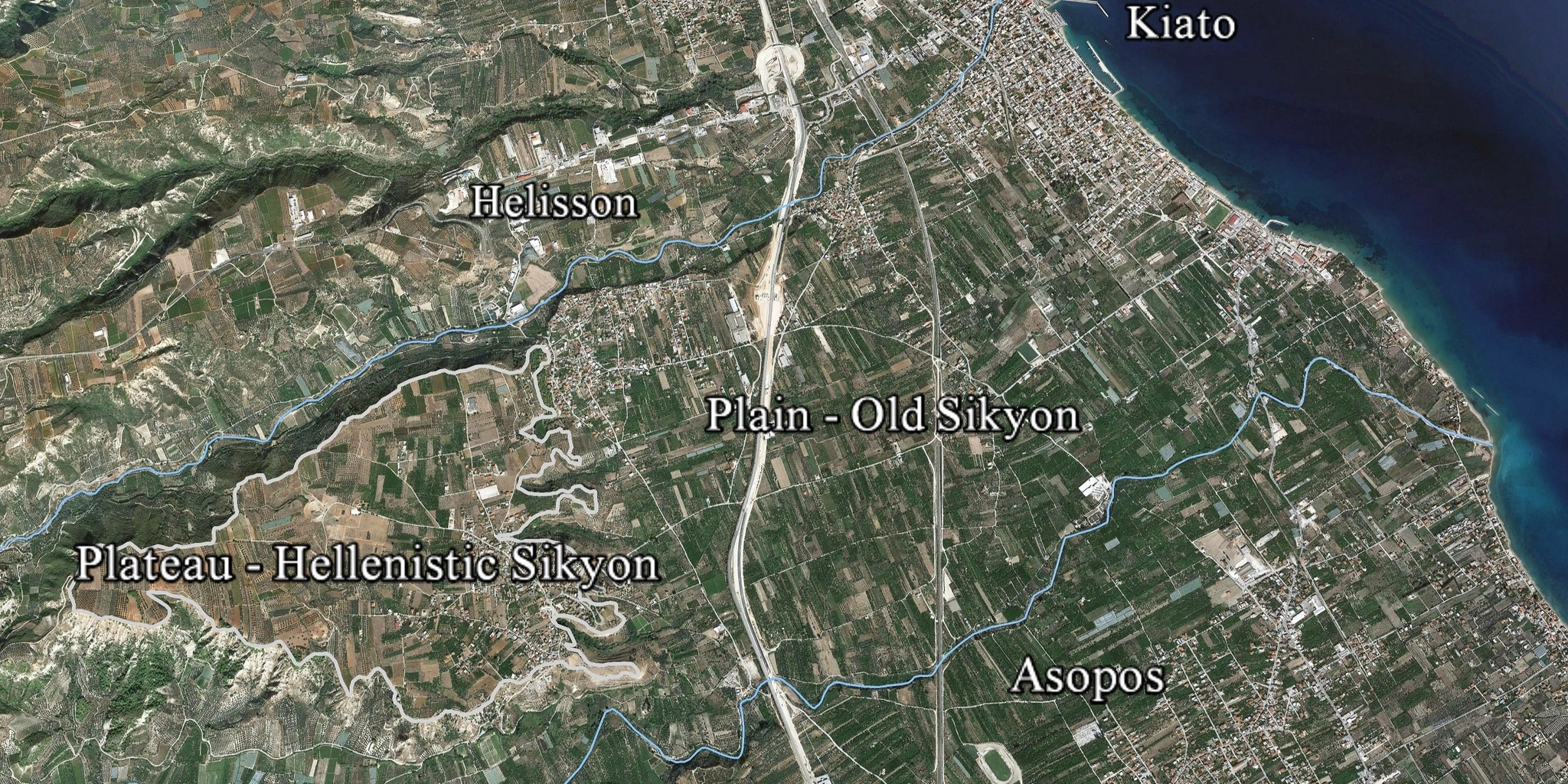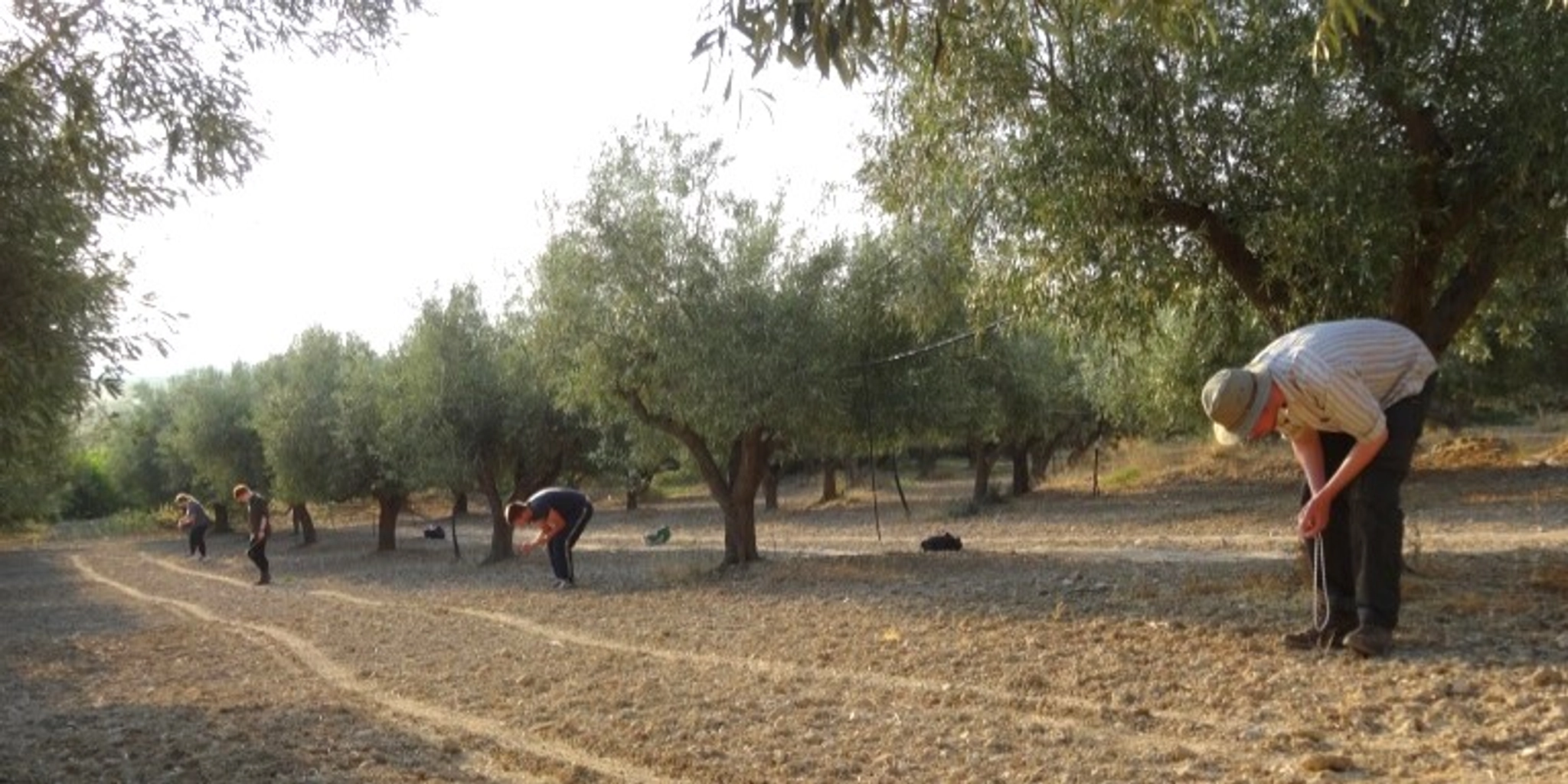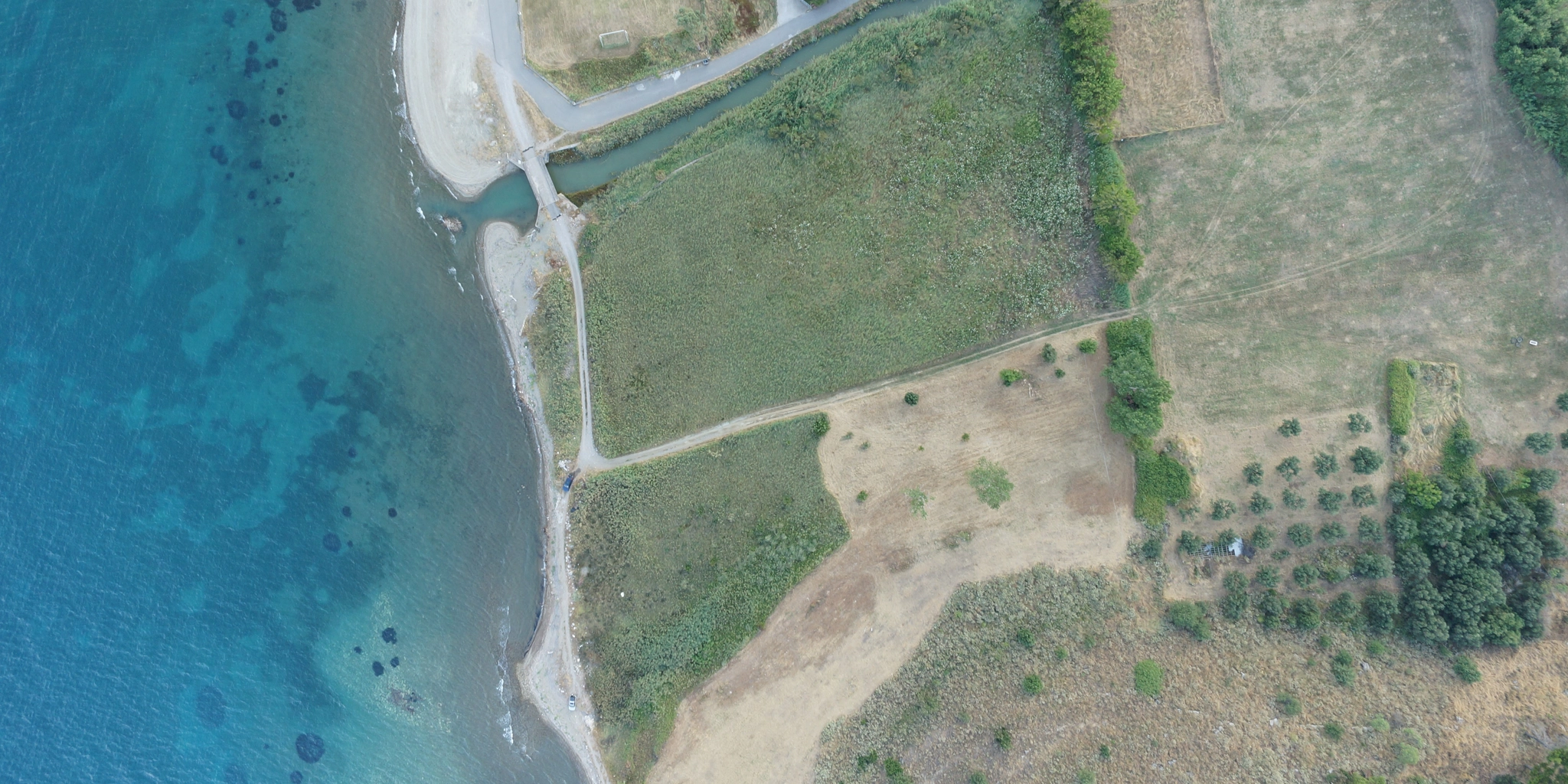Finding Old Sikyon
The ancient Greek polis of Sikyon was located on the north coast of the Peloponnese, between the poleis of Corinth to the east and Pellene to the west. It was famous as a centre of arts and crafts, particularly sculpture and painting, from the Archaic period to the end of the 3rd century BC. In 303 BC, the Macedonian general Demetrios Poliorcetes captured the city and rebuilt it at a new site close by, where it could be better defended. The site of this Hellenistic-Roman city on a plateau between the rivers Asopos and Helisson has been well-known through American and Greek scholars since the 19th century. The site of the Archaic and Classical city up to the end of the 4th century BC, however, had until recently not been clearly identified. It could be supposed to lie in the plain north-east of the plateau, with its acropolis on the plateau where later the Hellenistic town was founded, and a separate harbour. In the plain between the plateau, the two rivers and the sea, Classical remains were found on various spots in the frame of rescue excavations, including houses and parts of a necropolis.
From 2015 to 2021, an interdisciplinary project has been conducted in order to identify the site and to analyse the specific settlement structures, urban fabric and material culture of Old Sikyon. It was set up as a cooperation between the Ephorate of Corinth (represented by Dr Konstantinos Kissas), the National Museum of Denmark in Copenhagen (represented in 2015 by Dr Rune Frederiksen and 2016-2021 by Dr Silke Müth-Frederiksen), the Danish Institute at Athens (represented by its directors Dr Kristina Winther-Jacobsen and Dr Mogens Pelt) and the Institute for Geosciences of the Christian Albrechts University of Kiel (represented by Prof Wolfgang Rabbel). Funding was generously provided by the Carlsberg Foundation with additional support from the General Consul Gösta Enbom Foundation and the National Museum of Denmark.
The research area of the project extended over the whole plain between the plateau of the Hellenistic city, the aforementioned two rivers and the coast (Fig. 1). The first investigation period covering the years 2015 and 2016 was dedicated primarily to non-invasive research methods (Figs. 2-3): remote sensing (by Dr Jamieson Donati), systematic intensive survey (directed by Dr Kristina Winther-Jacobsen/DIA), several forms of geophysical investigations (directed by Prof Wolfgang Rabbel/University of Kiel and Dr Burkart Ullrich/Eastern Atlas, Berlin) and geological coring (directed by Dr Wieke de Neef/University of Groningen). These investigations served the purpose of identifying the location and extent of Old Sikyon, its urban fabric and special features and areas. From 2017 to 2019, excavations were conducted in order to further investigate various structures revealed by non-invasive research, to retrieve chronological information and to gain more material evidence on the urban and cultural life of Archaic and Classical Sikyon. These excavations were combined with archaeobotanical studies (by Kyriaki Tsirtsi/Cyprus Institute, Nicosia) and a geo-archaeological survey in search of quarries and transport routes for the stone varieties used in the city (by Dr Chris Hayward, University of Edinburgh). An extended study season in 2021 including additionally micromorphological, archaeozoological and bio-anthropological studies (by Dr Myrsini Gkouma/Wiener Lab, Athens, Dr Alfred Galik/Austrian Academy of Sciences and Mette Arenfeldt/Museum of Southern Jutland) as well as some final seismic research in the harbour area concluded the field research of the project.

Fig. 1: Location of Archaic-Classical Sikyon in the plain and Hellenistic-Roman Sikyon on the plateau (Google Earth/G. Giannakopoulos)

Fig. 2: Archaeological survey in the north-western area of Old Sikyon (S. Müth-Frederiksen)
The location of Old Sikyon was identified in the south-western part of the plain close to the slopes of the plateau (Fig. 1) and the extent of the settlement as well as its urban pattern could be defined. It was a naturally grown, coherent settlement, which nevertheless includes a street pattern with some regularities and some denser as well as more loosely occupied zones. Structures of the Archaic city were identified under the core area of the Classical city. Surrounding the city, several necropoleis were located, and the separate harbour settlement at the coast comprised a c. 20 m wide harbour basin or channel discovered by geophysical research.
A range of different architectural structures and monuments were unearthed in the excavations, e.g. a large Classical building on top of Archaic graves including a small tomb cult, combined with probably public or commercial dining and drinking activities (Fig. 4), a late Classical/early Hellenistic grave monument with remains of a decorative architectural façade and graves equipped with rich grave gifts, middle- to high-range private houses, various types of workshops, large agricultural complexes and possibly public architecture.
The analysis of the material culture of the city ascertained an independent pottery production in Old Sikyon and yielded evidence for lively trading connections, particularly with Corinth and towards the eastern Mediterranean. The mapping of rock varieties in the surroundings of Sikyon showed that there were rich sources of the more common stone varieties in the Sikyonian hinterland, but that the best limestone variety was imported from the Corinth region. Through the identification of plant varieties grown and the food consumed in Sikyon, the provision scheme can be assumed to have been based rather on a subsistence economy than on extended import and export of plants. The generally healthy, but rather sweet diet of the Sikyonians is mirrored in the anthropological characteristics of the skeletons of the inhabitants of Old Sikyon, whose state of health, illnesses and life expectancy are in the usual range for this period in Greece.
Furthermore, the investigations of the project yielded information on the process of conquest, abandonment and relocation of the old city to the plateau and on the long-term settlement cycle of the Sikyonian area from the Neoliothic period into the modern era, with repeated changes between the plateau and the plain. The results of the project are currently prepared for publication.

Fig. 3: Resistivity and seismic measurements in summer 2015: field transects (W. Rabbel)

Fig. 4: Drone picture of the Classical building in Trench 3A from southeast (S. Müth-Frederiksen)
Five PhD theses have been or are being written in relation to the project
- Nadia Maria Kristensen: The Abandonment and Relocation of Old Sikyon in 303 BCE. An Analysis of Formation Processes and Ceramics (University of Copenhagen, Denmark)
(defended 2021) - Katharina Rusch: Geophysical Prospection of Archaeological Sites on the Northern Peloponnese, Greece (Christian Albrechts University Kiel, Germany)
(defended 2022) - Kyriaki Tsirtsi: Agricultural and Domestic Practices in Classical Sikyon: Evidence from the Archaeobotanical Remains and Utilitarian Pots(The Cyprus Institute, Nicosia, Cyprus)
(defended 2022) - Zoe Spyranti: Architecture and Design of Private Space in Classical Sikyon (University of Crete, Greece)
(ongoing) - Giorgos Giannakopoulos, Classical Pottery from Sikyon: the fine wares (University of Crete, Greece)
(ongoing)

